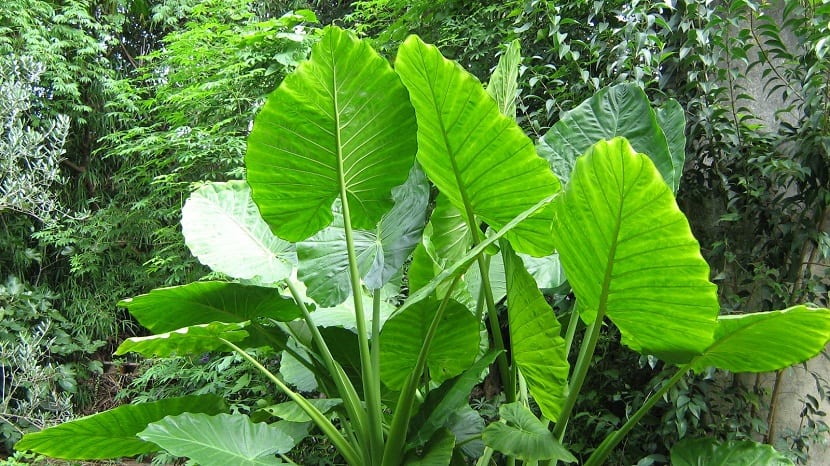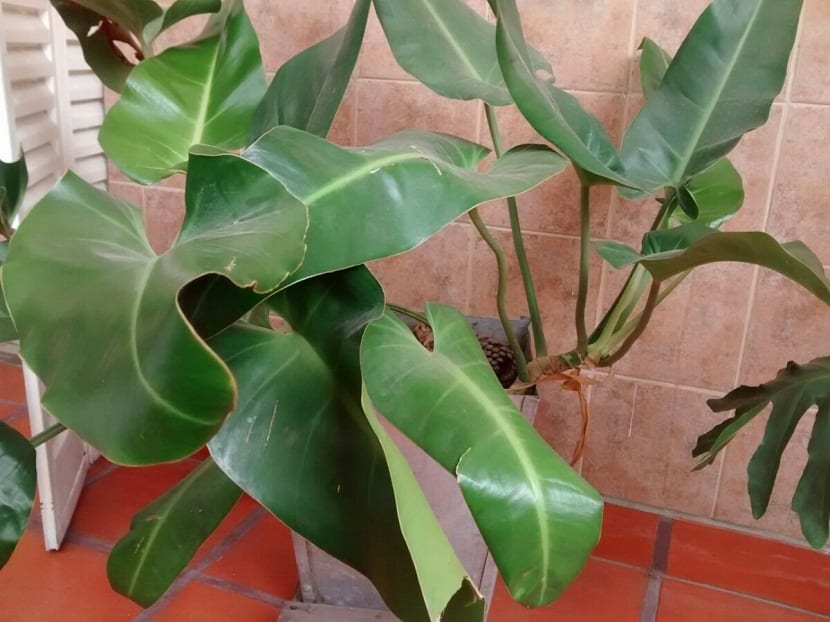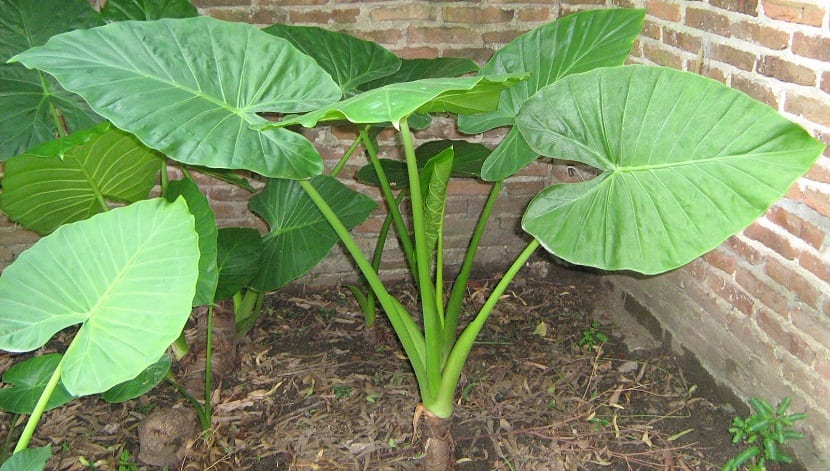
La alocasia zebrina es commonly known as elephant ear or zebra plant, comes from the broad family of Araceae and of species from the Far East, generally from the humid areas of countries such as Malaysia, India, the Philippines or Formosa.
Features

The main characteristic of this group is that its popularity is due to the huge leaves that are showy thanks to their large size. Usually, the members of this family they adapt very well to places that are in the interior, these being warm and bright. In addition, it is a plant with long and resistant petioles that support huge leaves that are in the shape of a lance, are erect and have a glossy surface, its colors are of a metallic green and it also has marked and thick nerves.
The uniqueness of the species can be found in the resistant petioles it has, where each peduncle has dark green stripes in the sections, in a zealous way, thanks to this is that the alocasia zebrina it has this name.
In the same way, its stems have spots that also resemble the back of a zebra. There are also another type of species that also have a dark greenish foliage but with spots that have yellowish tones.
Alocasia zebrina cultivation
For its cultivation it is necessary that the climates where it is planted have warm temperatures and have high humidity, tropical-type gardens are ideal. On the other hand, the Elephant Ear plant requires a lot of lighting, for which it is necessary that it be in a space where it receives direct sunlight. The substrate must be watered very carefully, always leaving it slightly damp, and being aware that the excess water flows fluently through the holes in the pot.
So that it has a balanced development, must be paid gently, also adding an irrigation that begins during the spring season. It can also grow under the protection of trees or plants that are larger than it.
The changes of pots should be done annually or adapt it in a large pot, this is because with the passage of time, the plants will grow until they acquire a fairly considerable size, the soils must also have a rich value of potassium or sulfur . During cold seasons, the plant enters a kind of rest, in which the production of leaves is stunned in a remarkable way.
You must know very well the care of the elephant ear or care for plants with large leaves. Once the spring season begins and thanks to the good weather, the plant comes back to life and starts its growth activity again Normally, during this time it is necessary to increase the irrigation times and feed it again.
On the other hand, its propagation during the spring occurs through the division of the underground rhizome, therefore be sure that each piece of rhizome has at least one bud. The flowering that gives is a creamy white spadix, in turn this is rolled up in a green leaf, which is named spathe, however, it is unusual when it presents is flowering indoors, it usually occurs when it is in its natural habitat.
Plagues and diseases

Regarding diseases, this is a plant with a high resistance, however, like all the others, sometimes it can be affected by some pests or diseases. So that it is not affected by the attack of insects, it is recommended that its leaves do not keep dirt, therefore they must be cleaned frequently, using a damp cloth, this will considerably reduce the chances of it being contagious.
Uses
Conclusion ideal as ornamental plants since they not only present an immense leaf that makes it very exotic, but both these and the stained stem that gives it that touch of zebra. Your interior will look much better with a plant of these, since they are also highly resistant to diseases and pests So you don't need to worry too much about whether or not they can catch it.